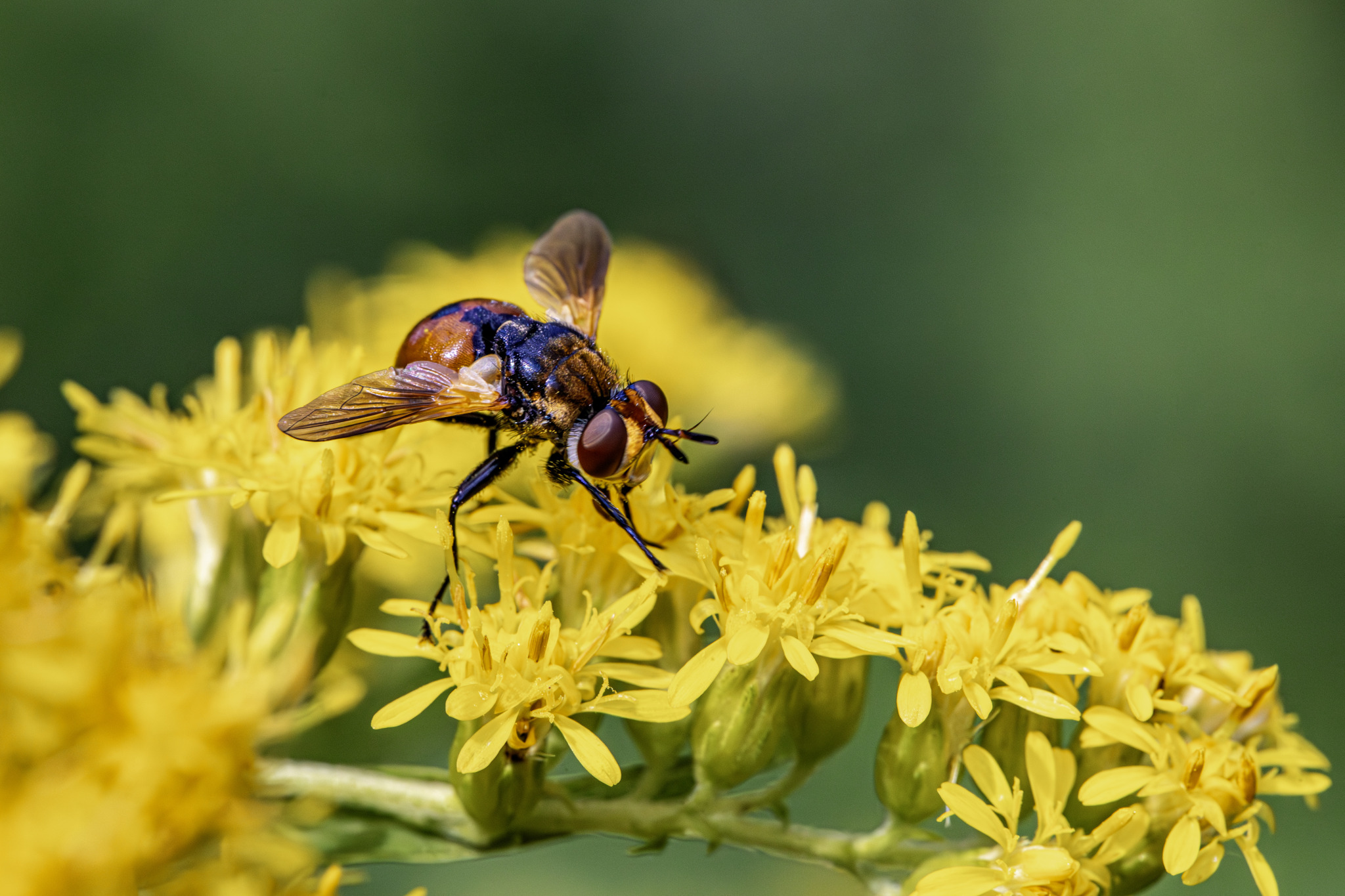Ectophasia crassipenis is a fascinating species of tachinid fly known for its distinctive appearance and parasitic behavior. Here’s an overview of this intriguing insect:
Description
- Size: Ectophasia crassipenis is a relatively small fly, typically measuring around 5-8 millimeters in length.
- Appearance:
- Body: The body is robust and often dark in color, ranging from black to metallic grey.
- Wings: The wings are clear with distinctive dark spots or bands, which can be useful for identification.
- Head: The head is characterized by large, prominent compound eyes and a short proboscis.
- Legs: The legs are relatively short and sturdy, suited for gripping onto hosts or vegetation.
Habitat
- Distribution: Ectophasia crassipenis is found across various parts of Europe, favoring temperate climates.
- Preferred Environment: These flies thrive in areas with abundant flowering plants, such as meadows, gardens, and woodland edges. They are often seen on flowers, where they feed on nectar and seek out hosts for their larvae.
Behavior and Ecology
- Diet: Adult Ectophasia crassipenis primarily feed on nectar and pollen, contributing to their role as pollinators.
- Parasitic Behavior: The larvae of Ectophasia crassipenis are parasitoids, meaning they develop inside a host organism, ultimately leading to the host’s death. They typically parasitize Hemiptera species, such as shield bugs.
- Reproduction: Females lay their eggs on or near suitable hosts. Upon hatching, the larvae penetrate the host’s body and begin to feed internally, eventually killing the host as they develop.
Conservation Status
- Threats: The primary threats to Ectophasia crassipenis include habitat destruction and the use of pesticides, which can reduce both adult food sources and the availability of host species.
- Conservation Efforts: Efforts to conserve this species focus on preserving natural habitats and promoting biodiversity, which helps maintain the populations of both the flies and their host species.
Interesting Facts
- Parasitism: The parasitic nature of Ectophasia crassipenis plays a significant role in controlling the populations of certain pest species, making them an important part of their ecosystem.
- Pollination: While primarily known for their parasitic larvae, adult Ectophasia crassipenis also contribute to pollination, helping to support plant biodiversity.
Observing Ectophasia crassipenis
- Best Places: To observe these flies, visit areas with abundant flowers during the warmer months. Gardens, meadows, and woodland edges are ideal spots.
- Watching Tips: Look for them resting on flowers, where they can be easily spotted due to their distinctive wing patterns. Observing their interactions with flowers and potential host insects can provide insights into their ecological roles.
Ectophasia crassipenis is a remarkable example of the complex relationships within ecosystems, showcasing both parasitism and pollination. Observing these flies can offer a deeper appreciation of the intricate dynamics in nature.
Visited 183 times, 20 visit(s) today
Views: 343
Subscribe to the newsletter:
